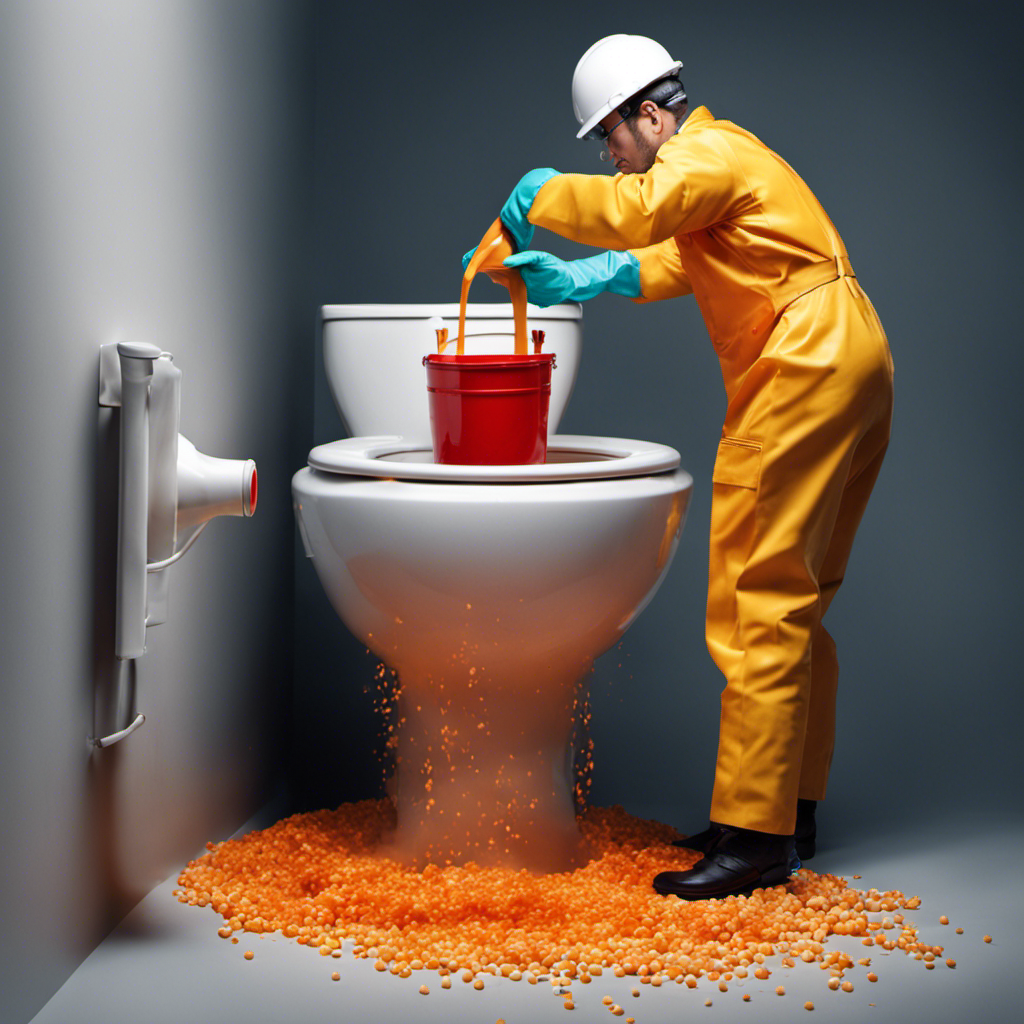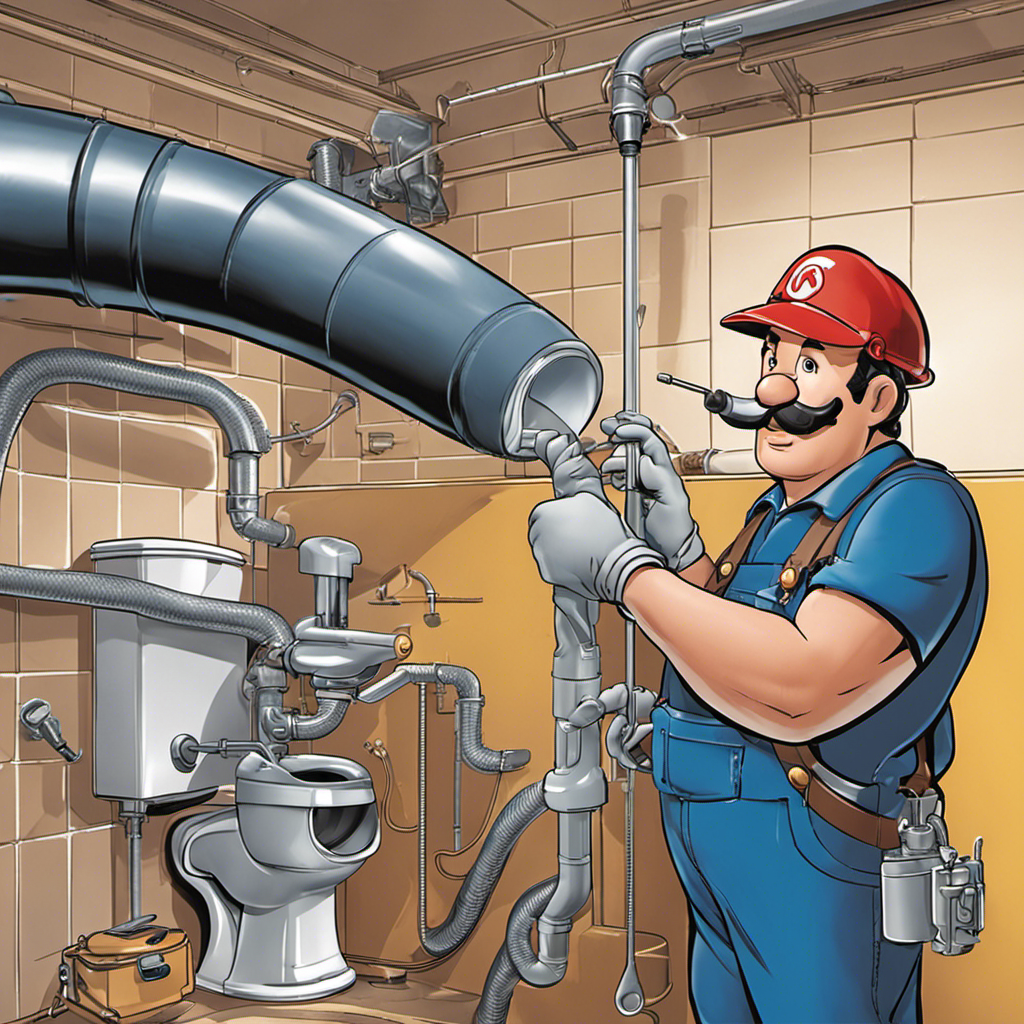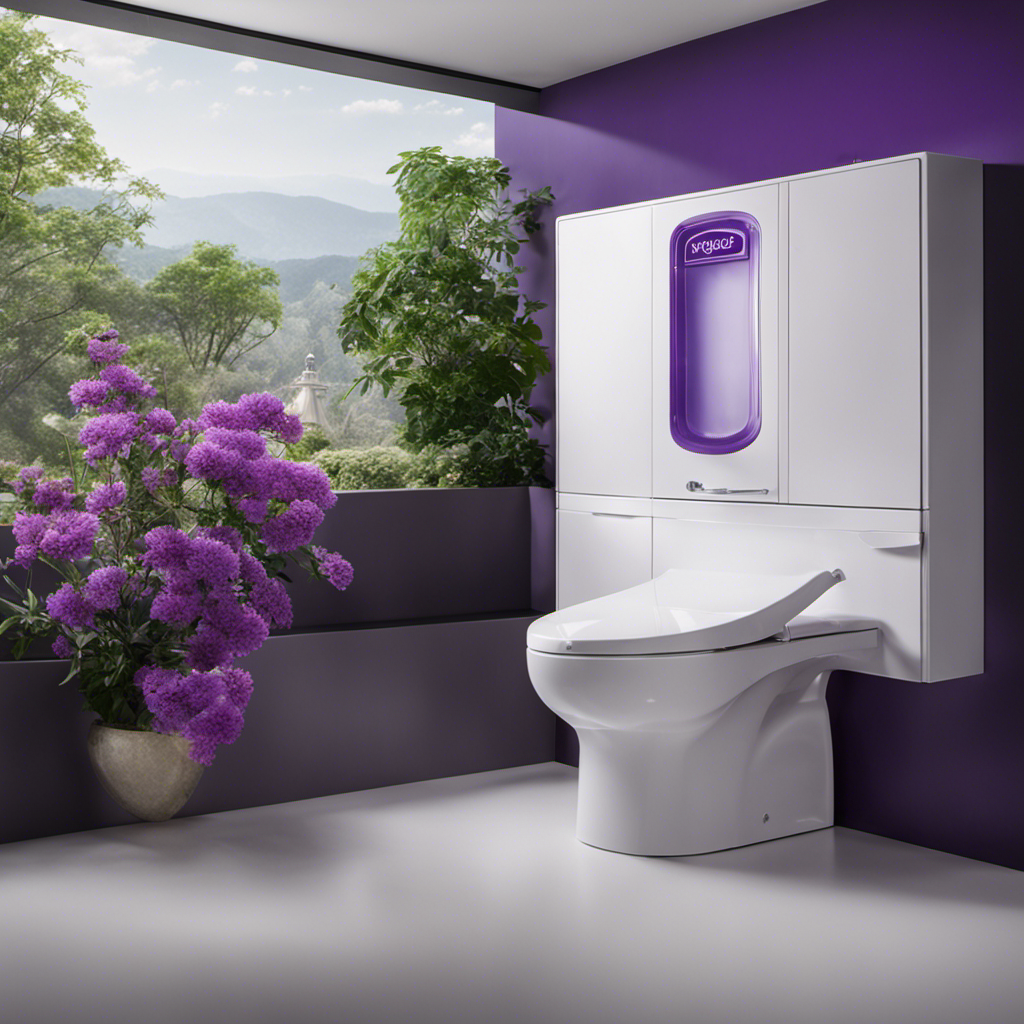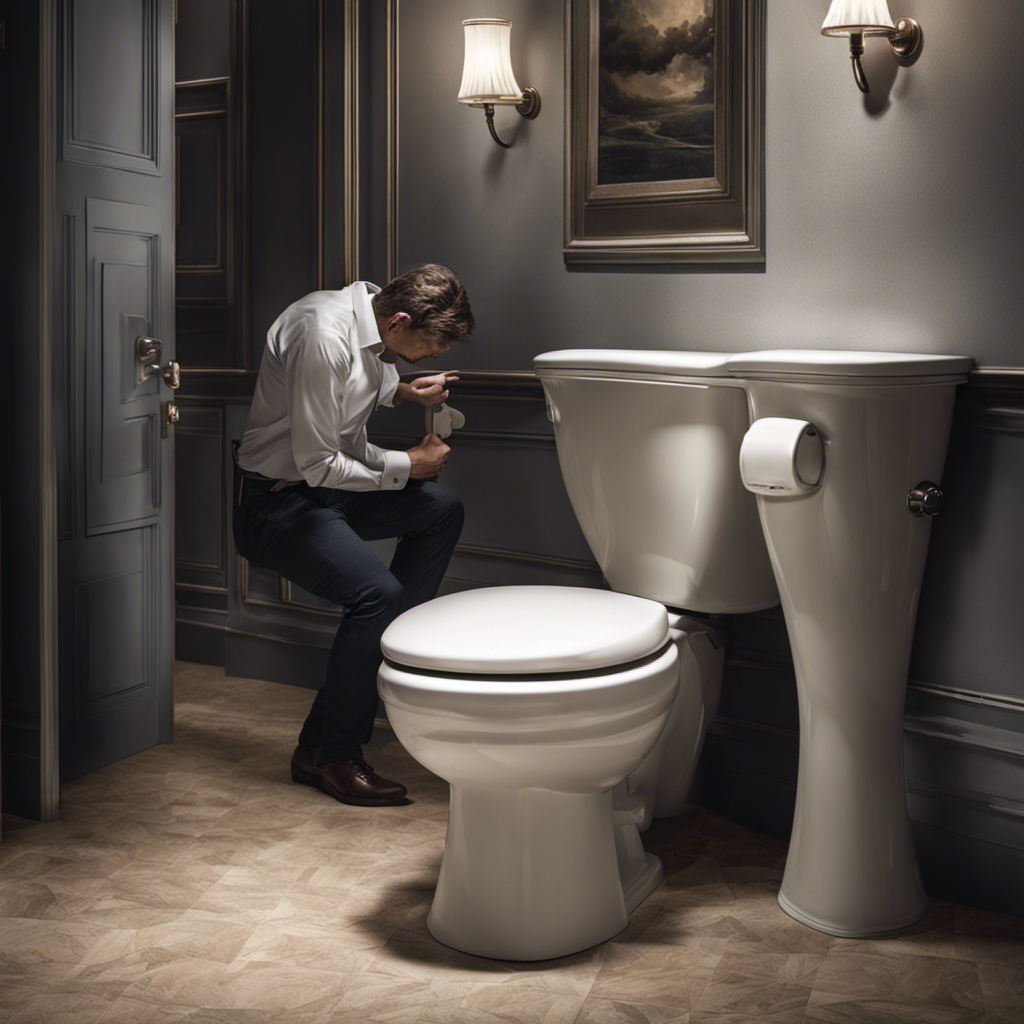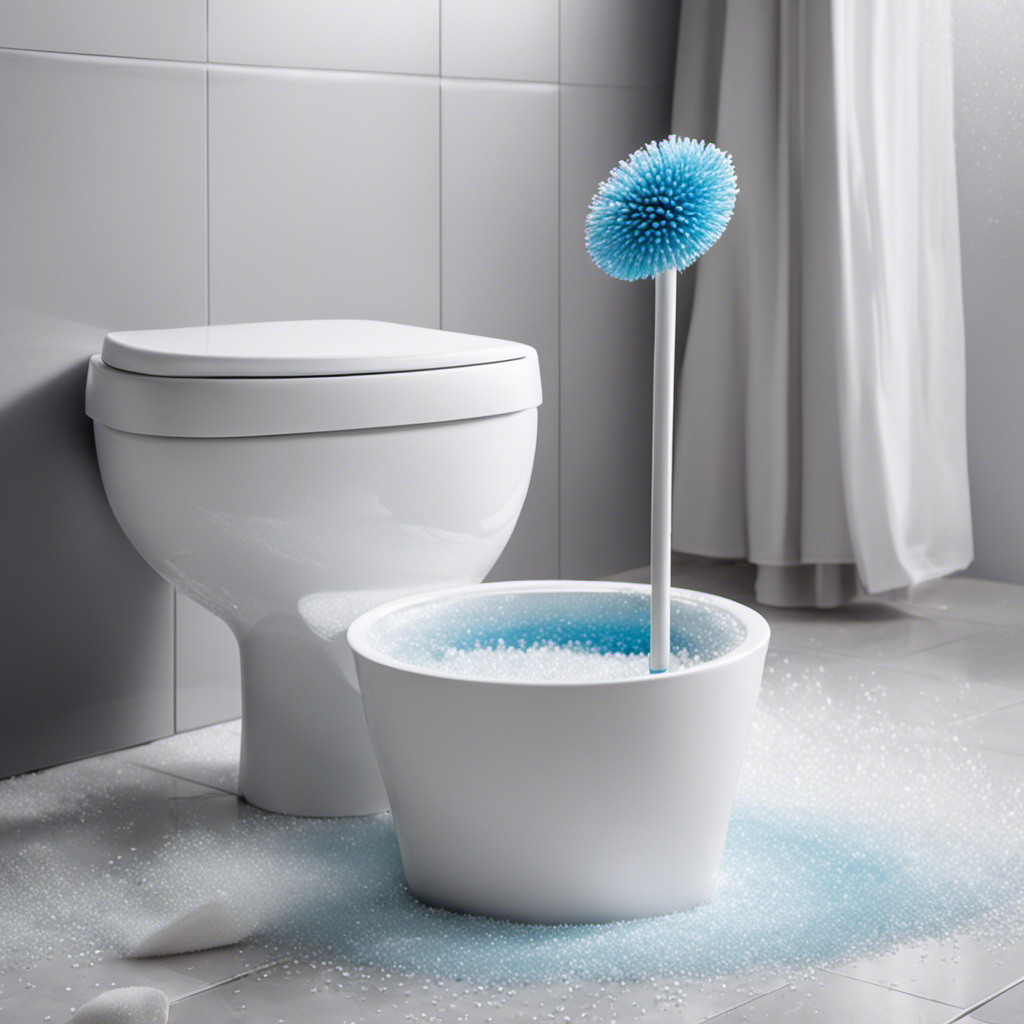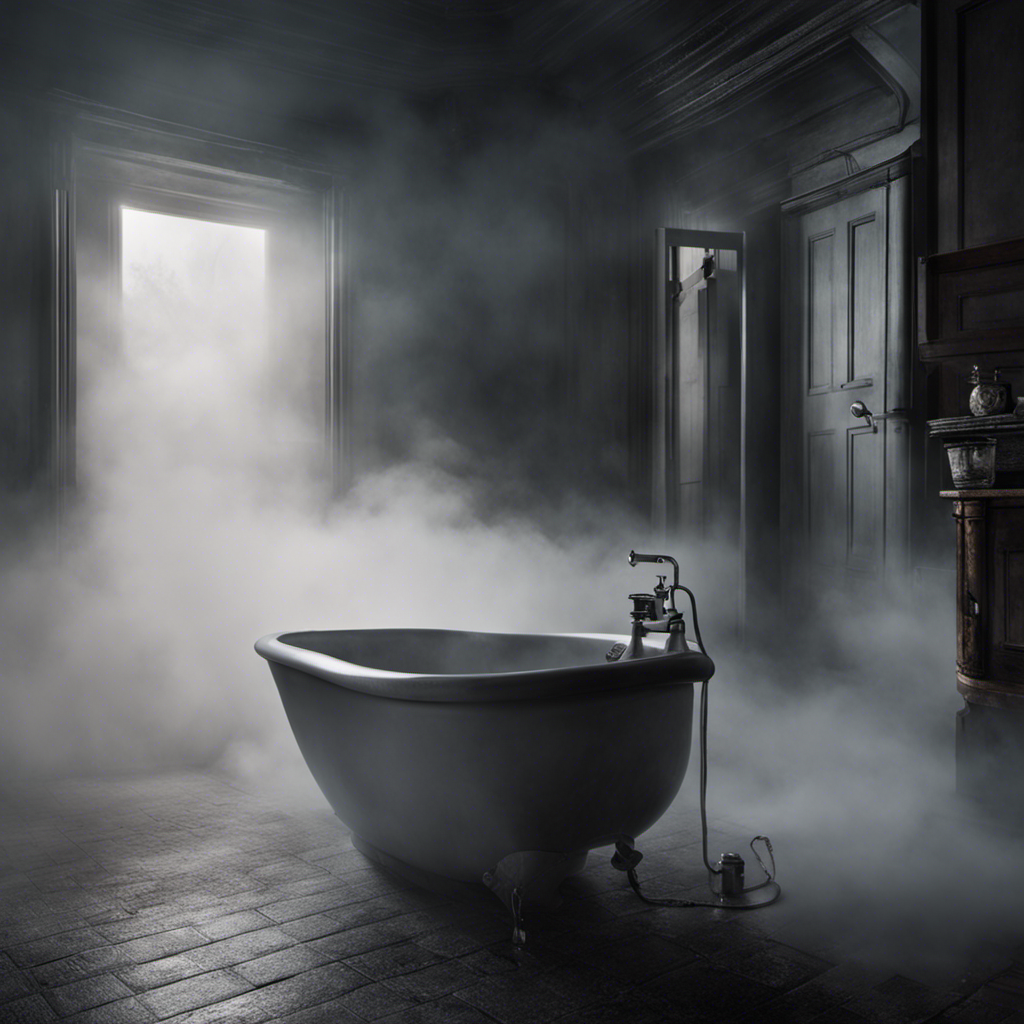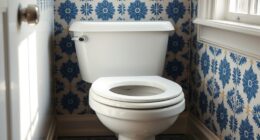I’ve been there – standing in front of a clogged toilet with no plunger in sight. It’s a panic-inducing situation, but fear not!
In this article, I’ll guide you through the steps of unclogging your toilet without a plunger using common household items. From makeshift plungers to natural solutions, we’ll explore the options to tackle this messy problem.
So, roll up your sleeves and get ready to become a toilet unclogging expert.
Key Takeaways
- Common household items such as a wire hanger, baking soda and vinegar, hot water and dish soap, rubber gloves, and disposable tools can be used to unclog a toilet without a plunger.
- There are step-by-step methods for unclogging a toilet, including checking for visible obstructions, using hot water and dish soap, mixing baking soda and vinegar, and using a straightened wire hanger.
- Natural and chemical-free solutions like baking soda and vinegar or a toilet auger can effectively unclog a toilet while being safe for the environment.
- To prevent future toilet clogs, only flush toilet paper and human waste, regularly clean the toilet, install a toilet paper holder, avoid flushing non-flushable items, and consider using a drain screen or strainer.
Common Household Items That Can Help
To unclog your toilet without a plunger, you can use common household items like a wire hanger or a baking soda and vinegar mixture.
These alternative methods for unclogging toilets are effective and can save you from the hassle of using a plunger.
A wire hanger can be straightened out and used as a makeshift snake to remove any obstructions in the toilet drain. Simply insert it and gently move it around to dislodge the clog.
Another unconventional household item that can help is a mixture of baking soda and vinegar. Pour about a cup of baking soda into the toilet bowl, followed by a cup of vinegar. Let the mixture sit for a few minutes, and then flush the toilet. The fizzing action of the mixture can help break down the clog and clear the toilet.
Step-by-Step Methods for Unclogging Your Toilet
Start by checking if there’s any visible obstruction in the toilet bowl, like a blockage caused by excessive toilet paper or other objects. If there is, remove it using gloves or a disposable tool.
If the obstruction is not visible, try these alternative techniques for unclogging your toilet without a plunger:
-
Hot Water and Dish Soap: Pour a pot of hot (not boiling) water into the toilet bowl, followed by a few squirts of dish soap. Let it sit for a few minutes, then flush.
-
Baking Soda and Vinegar: Mix equal parts baking soda and vinegar in a cup and pour it into the toilet bowl. Let it fizz for about 20 minutes, then flush.
-
Wire Hanger: Straighten a wire hanger and use it to break up the clog. Be careful not to scratch the toilet bowl.
These methods can be helpful in emergency situations when a plunger is not available. Remember to always exercise caution and consider contacting a professional if the clog persists.
Natural and Chemical-Free Solutions
Using natural and chemical-free solutions is a great way to address clogs in your toilet. When it comes to unclogging your toilet, there are eco-friendly alternatives and DIY techniques that can be effective.
One popular method is using a combination of baking soda and vinegar. Start by pouring one cup of baking soda into the toilet bowl, followed by one cup of vinegar. Let the mixture sit for about 30 minutes, then flush the toilet. The chemical reaction between the baking soda and vinegar helps break down the clog.
Another option is using a toilet auger, which is a long, flexible tool that can reach deep into the toilet drain and break up the clog. These natural and chemical-free solutions are not only effective but also safe for the environment. By incorporating these techniques, you can unclog your toilet without relying on harmful chemicals.
To prevent future clogs, it’s important to be mindful of what you flush down the toilet. Avoid flushing items like feminine hygiene products, wipes, or excessive toilet paper, as they can easily cause clogs. Additionally, you can consider installing a drain screen or strainer to catch any debris before it enters the toilet drain. Regular toilet maintenance, such as cleaning the rim and jets, can also help prevent clogs.
Tips for Preventing Future Clogs
When it comes to preventing future clogs, you should be mindful of what you flush down the toilet. Proper toilet maintenance is essential for avoiding costly and inconvenient plumbing issues. Here are some tips to help you keep your toilet clog-free:
-
Be cautious with what you flush: Only flush toilet paper and human waste down the toilet. Avoid flushing items like baby wipes, cotton balls, or paper towels, as they can cause clogs.
-
Regularly clean your toilet: Regular cleaning helps prevent the buildup of residue and mineral deposits that can contribute to clogs. Use a toilet brush and mild cleaner to keep your toilet clean and free from blockages.
-
Install a toilet paper holder: Installing a toilet paper holder can help regulate the amount of toilet paper used and prevent excessive flushing, which can lead to clogs.
When to Call a Professional
If you’re experiencing persistent clogs or sewage backup, it may be time to contact a professional plumber to assess the situation. While some minor clogs can be resolved with DIY methods, there are certain signs that indicate a serious clog that requires professional attention. These signs include multiple drains backing up simultaneously, foul odors coming from the drains, and gurgling sounds when flushing or using other plumbing fixtures. Ignoring these signs can lead to further damage to your plumbing system and potentially costly repairs. To help you understand when it’s time to call a professional, here’s a table outlining the signs of a serious clog:
| Signs of a Serious Clog |
|---|
| Multiple drains backing up simultaneously |
| Foul odors coming from the drains |
| Gurgling sounds when flushing or using other plumbing fixtures |
Frequently Asked Questions
Can I Use a Wire Coat Hanger to Unclog My Toilet?
Yes, a wire coat hanger can be used as an alternative to unclog a toilet. However, there are other DIY toilet unclogging methods that may be more effective and less likely to cause damage.
Is It Safe to Pour Boiling Water Into the Toilet Bowl?
Pouring boiling water into the toilet bowl can be an alternative to unclog it. However, there are risks involved, such as cracking the porcelain or burning yourself. It is recommended to use other methods first.
Can I Use Dish Soap to Unclog My Toilet?
I wouldn’t recommend using dish soap to unclog your toilet. There are safer alternatives like vinegar and baking soda or using a toilet auger. These natural remedies are more effective and won’t cause any damage.
Will Baking Soda and Vinegar Damage My Toilet Pipes?
Using baking soda and vinegar to unclog toilets is effective and safe for your pipes. However, there are alternative methods, such as using a toilet auger or a drain snake, that can also unclog your toilet without a plunger.
How Can I Prevent Clogs Caused by Excessive Toilet Paper Usage?
To prevent clogs caused by excessive toilet paper usage, I’ve found that exploring toilet paper alternatives and eco-friendly options can be effective. It’s important to consider these alternatives to maintain a smoothly functioning toilet.
Conclusion
In conclusion, unclogging a toilet without a plunger is not as daunting as it may seem. By using common household items such as dish soap, hot water, or a wire hanger, you can effectively clear a clog. Alternatively, natural solutions like baking soda and vinegar can offer chemical-free options.
Remember to take preventive measures, like regular maintenance and being mindful of what you flush. However, in more severe cases, it is crucial to call a professional. For example, a friend of mine recently encountered a stubborn clog that required the expertise of a plumber to resolve.
